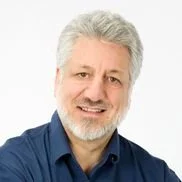
Helping Your Child Thrive with Proven Reading & Learning Support
A compassionate, science-based approach to literacy and brain training for families online.
Learn More

About Cognitive Learning
At Cognitive Learning, we are dedicated to helping children unlock their full learning potential. Combining decades of research in neuroscience, we provide online programs designed to strengthen the foundational cognitive and literacy skills that underlie confident, independent learning.
Our approach is personalized, evidence-based, and designed to meet each child’s needs. We work with students needing extra support with reading, attention or processing. We focus not only on academic growth but also on building confidence, motivation, and a lifelong love of learning.
Cognitive Learning partners with parents to provide premium, results-driven programs in a supportive, home-based environment. Our mission is simple: give every child the tools and guidance they need to succeed today, and in all their tomorrows.
Meet Your Provider
Brian Nashman
Mr. Nashman is the owner of Cognitive Learning in Peterborough. He is a certified provider of the Fast Forward Program from Scientific Learning Corporation in Oakland, California and the Listening Program by Advanced Brain Technologies in Centerville, Utah. He has diversified experience in T.E.S.L., child and adult education, cognitive learning, community economic development, co-operatives, financial planning, and entrepreneurship. He chose Peterborough in 1988 as an excellent place to raise a family.

Fast ForWord® Reading & Cognitive Training Online
A gentle, science-based way to help your child become a stronger, more confident learner.
At Cognitive Learning, we bring the proven Fast ForWord method to families worldwide. This evidence-based program strengthens the core skills behind reading and learning, helping children make real, lasting progress.
Fast ForWord helps improve:
Reading fluency & comprehension
Vocabulary and language processing
Memory, focus & attention
Processing speed and learning confidence
Why Parents Choose Fast ForWord.
Decades of research and strong, measurable results
A positive, encouraging atmosphere that reduces stress
Regular updates for parents so you always understand progress
This approach is ideal for children who struggle with reading, have ADHD or processing challenges, or need a more personalized solution than standard tutoring can provide.

The Listening Program® — Music-Based Brain Training for Better Focus, Communication, and Well-Being
A science-driven listening therapy that strengthens neurological function through expertly engineered music.
At Cognitive Learning, we’re proud to be certified providers of The Listening Program® (TLP). TLP is an evidence-informed, neuroscience-based music listening therapy that supports brain health, communication, attention, emotional regulation, and more for children and adults alike. Unlike ordinary music, TLP uses high-definition, acoustically-engineered sound designed to engage and train the brain’s neural pathways for improved learning and functioning.
How TLP Works
TLP has a broad range of real-world applications — from helping with sensory processing, stress regulation, and communication challenges to supporting academic engagement, social skills, and cognitive performance.
Scientifically designed music — crafted and recorded with world-class musicians and engineered with advanced neuro-acoustic techniques to strengthen brain pathways.
Personalized listening programs — adapted to a child’s or adult’s needs, focusing on areas like attention, auditory processing, executive function, social-emotional skills, and stress response.
Easy daily routine — simple listening sessions that fit into everyday life, making neuroplastic change accessible without stress.
TLP Helps Improve:
TLP can support improvements in:
Listening, communication & language skills
Focus, attention and self-regulation
Auditory processing and sensory comfort
Emotional balance and stress resilience
Executive function and learning readiness
Motor coordination and creative expression
Many families and therapists report meaningful, life-enhancing changes over time with consistent listening.
Why Families Choose TLP with Cognitive Learning
Neuroscience foundation: harnesses the brain’s natural ability to reorganize itself (neuroplasticity).
Customizable for every age: programs can be tailored for children, teens, and adults.
Complements other supports: enhances outcomes when paired with therapy, education, and developmental programming.
Easy, supportive process: listening that fits into daily routines with ongoing guidance.
The Listening Program is ideal for families looking for a gentle, effective, and engaging brain training tool to support better listening, learning, and day-to-day functioning.
Why Families Choose Cognitive Learning
At Cognitive Learning, we believe every child deserves an approach that meets them exactly where they are. Our focus goes far beyond traditional tutoring, we help build the foundational cognitive and literacy skills that support stronger reading, better focus, and confident learning. Families choose us because we blend proven, research-driven methods with compassionate, individualized support, creating an environment where children can genuinely grow.
What Sets Us Apart:
Scientifically validated methods grounded in decades of neuroscience and educational research
Ongoing support tailored to your child’s unique strengths and needs
Home based design to reduce frustration and build confidence
Clear communication with parents through consistent progress updates and guidance
Nurtures academic skills, cognitive development, and confidence
We work closely with families who want a meaningful, long-term solution, not a quick fix. Whether you or your child is struggling, needs more individualized attention than school can offer, or simply learns differently, our programs help them build the confidence and skills they need to move forward.
What Parents Are Saying
“(My child) has found success with Fast ForWord. She went up three levels in math in just a few months. She came back to take the Study Skills program which she really enjoyed!”
— Program Parent“We feel the Fast ForWord program pressed the fast forward button on our children’s reading level”
— Dianne V
“The Fast ForWord program is very innovative and has worked wonders for (my child)”
— Mary J


